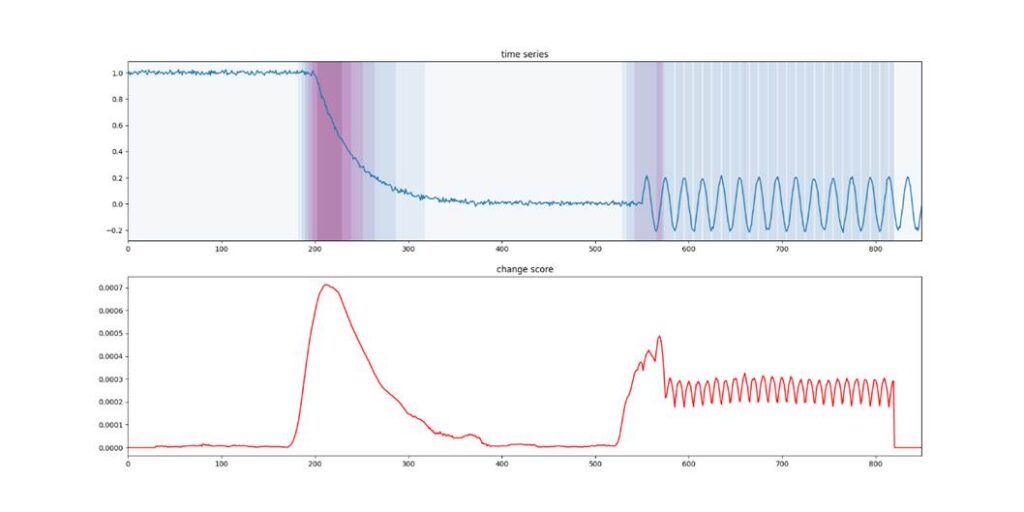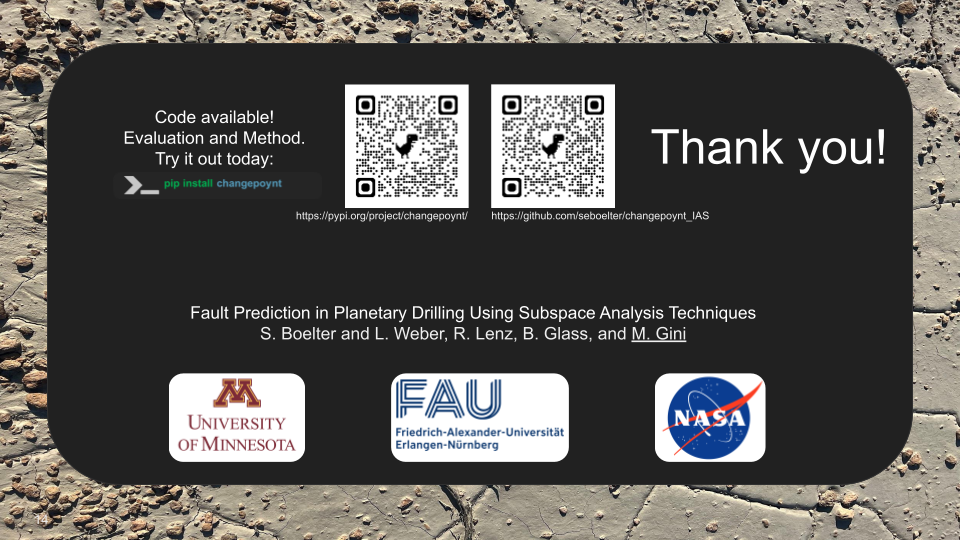From time series integration to planetary drilling robots
Sometimes the connections between different research fields are shorter than expected. That is why we are particularly pleased that our research results from the DARTS project found interdisciplinary use in the field of planetary robotics (NASA TRIDENT Drill). Extending the value of our research outside our application case is very motivating.
In the paper (“Fault Prediction in Planetary Drilling Using Subspace Analysis Techniques”), we present our novel change point detection method (ESST) and demonstrate how it meets the requirements of planetary robotics, outperforming other methods in detecting drilling faults. The paper will be presented at the Intelligent Autonomous Systems 19 conference in Genoa in early July 2025.
For the paper, we collaborated with Sarah Boelter (University of Minnesota-Twin Cities), Prof. Dr. Maria Gini (University of Minnesota-Twin Cities), and Brian Glass from NASA.
We would like to take this opportunity to thank all the co-authors for their initiative and excellent cooperation!

Fig.: Visualization of the difference between SST and ESST. The score computation is in green.
Originally, we developed the ESST based on the SST to detect changes in diverse time series. We then build on this detection to identify signals that change simultaneously, enabling us to discover highly nonlinear relationships if large time series datasets.
The method is published in our open-source package Changepoynt and on PyPI. We cordially invite everyone to test the methods.

Fig.: Example for Change Point Detection using the Changepoynt Package
Abstract
In remote planetary environments, robotic agents must respond to or reason through faults before they escalate to mission-critical failures. No broadly applicable solution exists to give a specialized agent like The Regolith and Ice Drill for Exploring New Terrain (TRIDENT) situational awareness for when a situation may escalate to a drilling fault. We propose a new online time-series subspace analysis method, Enhanced Singular Spectrum Transformation (ESST), to better predict and analyze faults using online data produced by the TRIDENT drill. We evaluate performance against other online subspace analysis techniques to determine the optimal detection method for sudden drilling faults.


